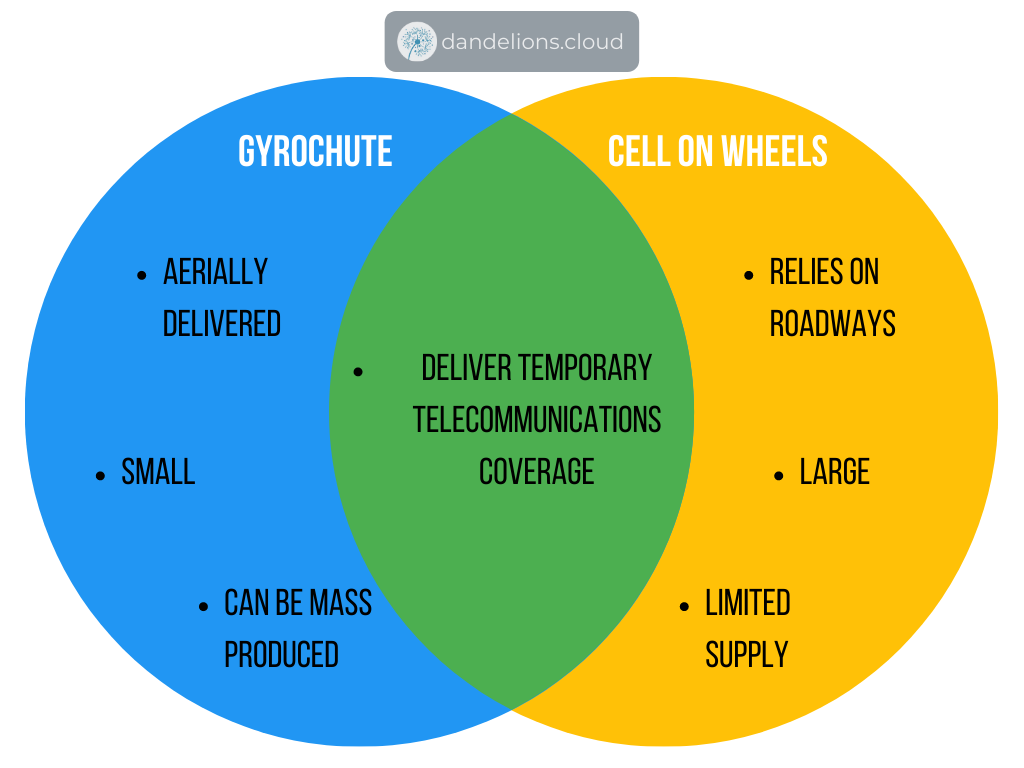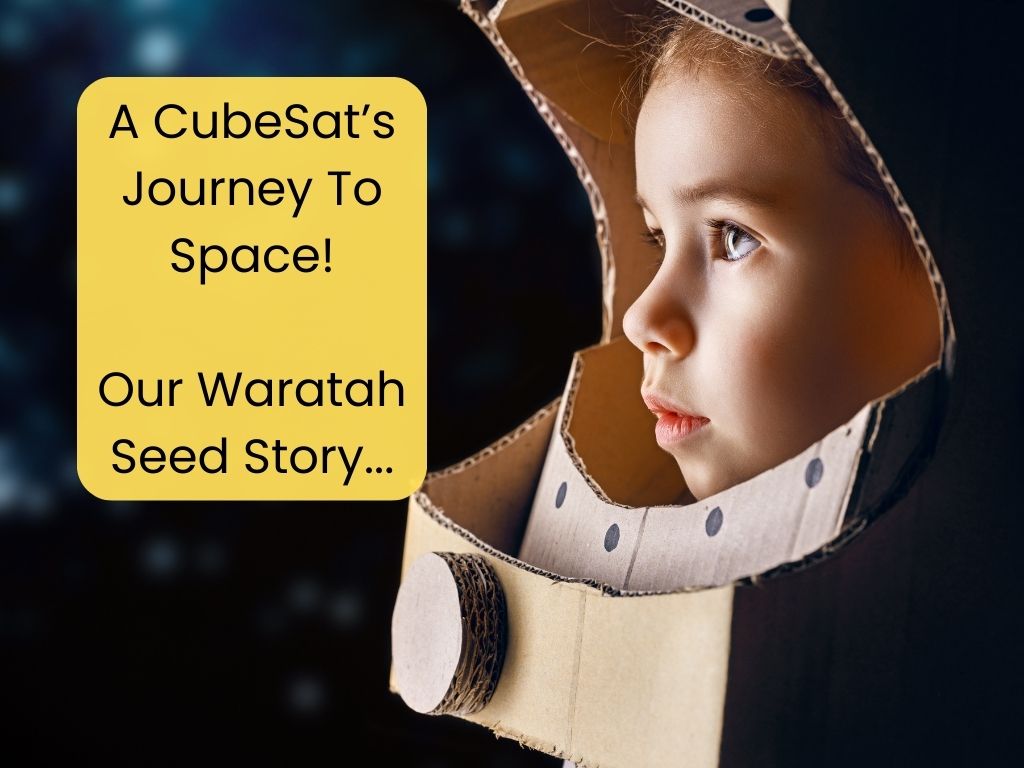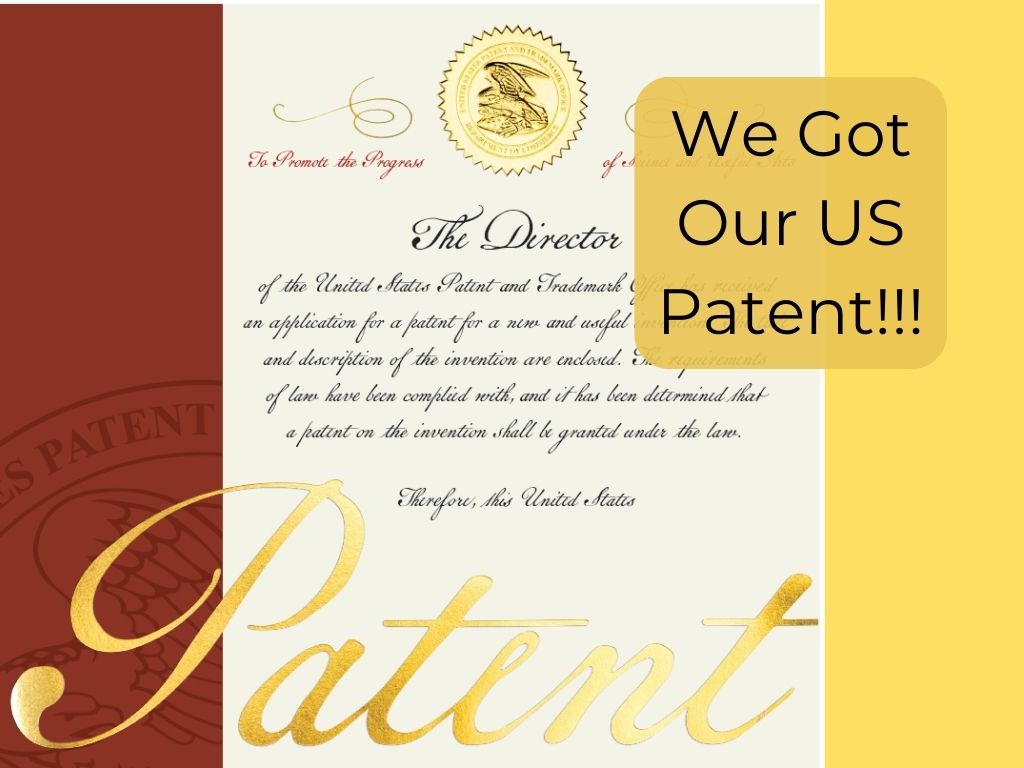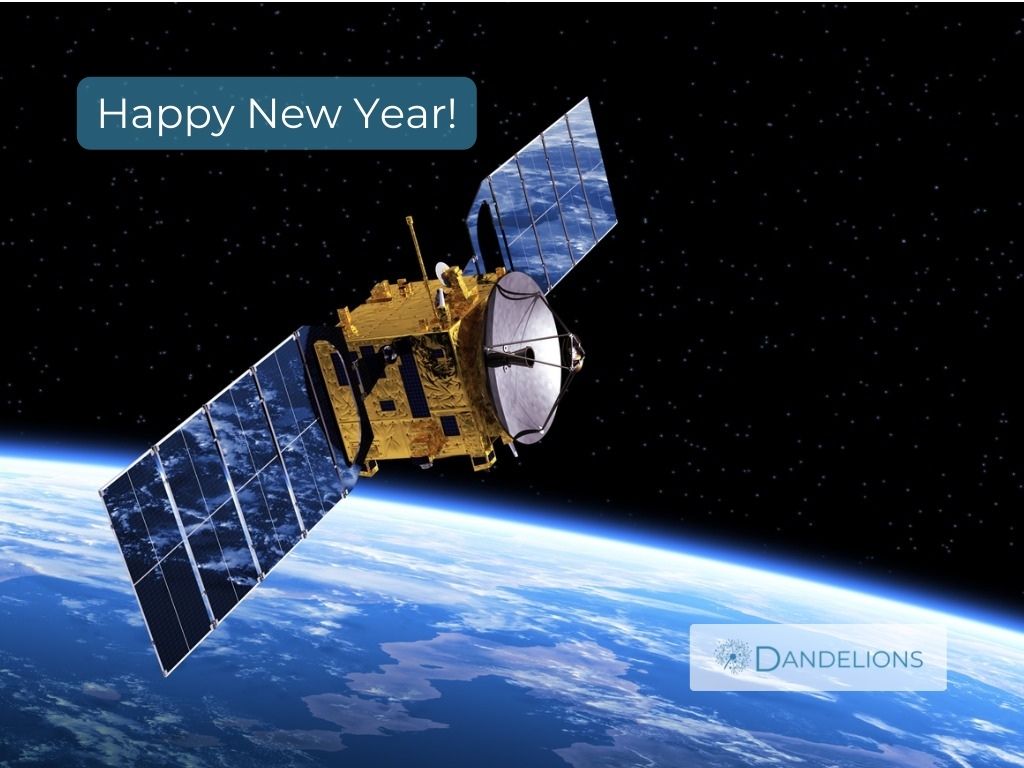, Welcome back to another Gyrochute VS series!
This time, we are going to discuss the Gyrochute and the COW. Wait, what?!
A CoW? The first thing that popped in your mind is probably the four-legged animal.
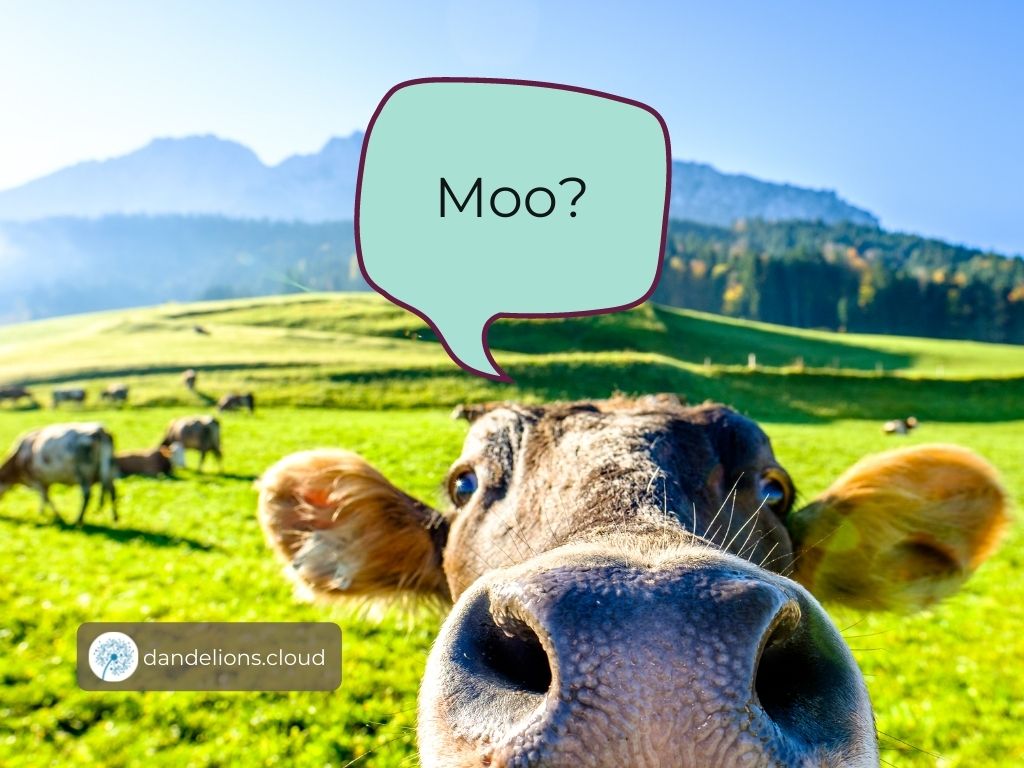
However, that is not what we are going to discuss this time.
We want to discuss a CoW, a common acronym used in the telecommunications industry to stand for "cell on wheels". Have you heard about the Cell on Wheels before?
What Are Cells On Wheels?
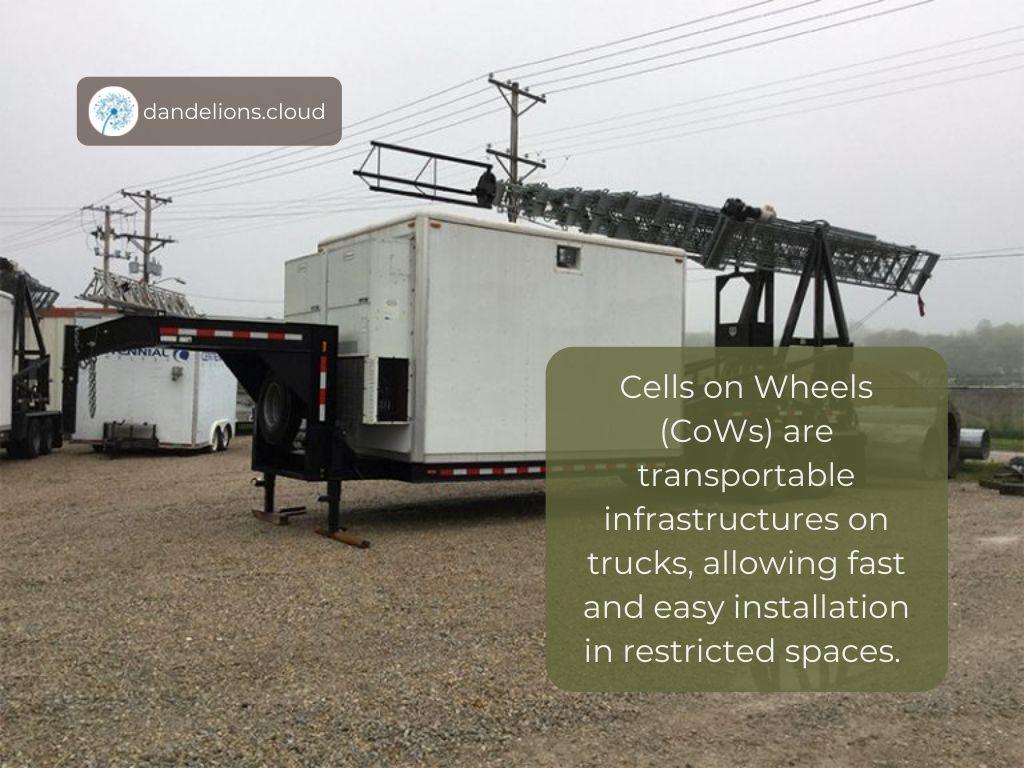
The Cell on Wheels (CoW) is a portable base station used to bring temporary cellular network coverage during emergencies where existing infrastructures are damaged, or during natural disasters such as floods and bushfires. Other use cases of Cells on Wheels include outdoor activities and events.
About The Cell On Wheels
A cell on wheels is used when there is a temporary need for strong cell signals. The cell on wheel towers, unlike standard towers, are highly portable. This way, the COW can be used on a short-term basis, since they are not constructed for permanence.
The CoW can be moved over huge distances and on rough landscape and may be left on site for a specific timeframe with the utilization of either mains power or a backup generator.
There are numerous CoW sizes, each intended for various requirements, including simple access, more strength or more stability.
Usually, a CoW is designed with a self-raising pneumatic pole with arranged locking and different head frame alternatives for different antenna types, a separate microwave antenna mount, 19" racks for radio equipment, DC power, full electrical and mechanical fit-out.
The smallest versions of the CoW sit on trailers that can be pulled by almost any standard truck, though the biggest versions of the CoW require a heavy-duty rig to tow and set up the tower. The bigger versions allow for a bigger tower and more power, while the smaller versions are easier to add or remove without as much planning.
Use Cases Of The CoW
Emergency Use Cases
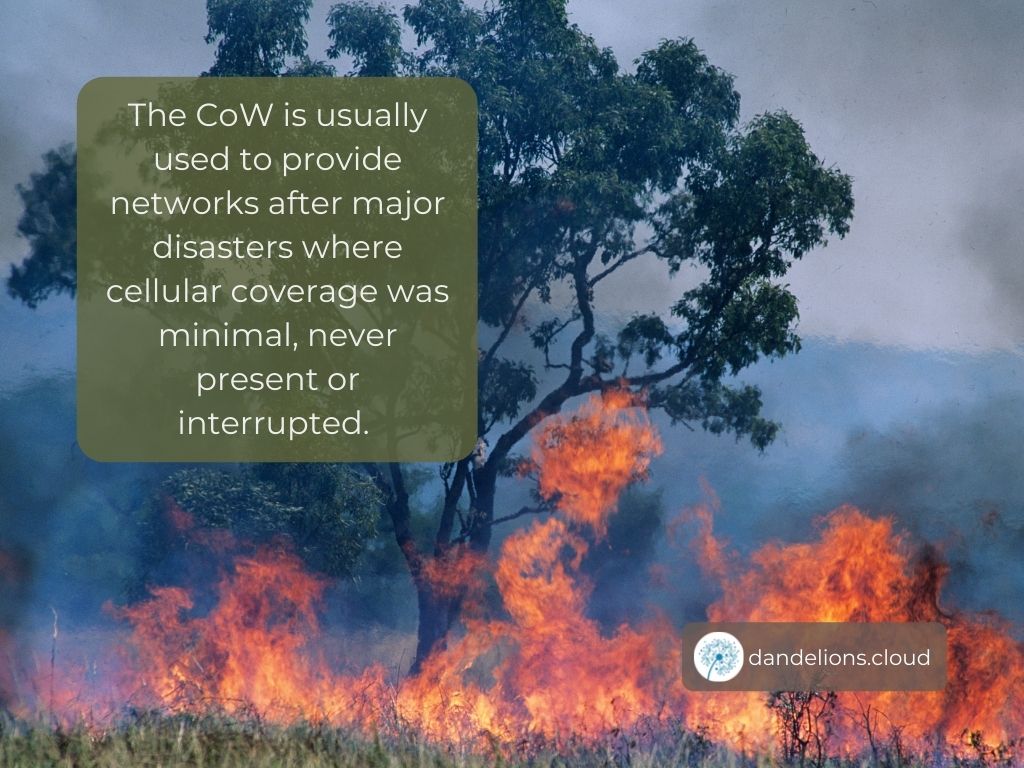
The CoW is usually used to provide networks after major disasters where cellular coverage was minimal, never present, or interrupted.
For example, during a natural disaster, the emergency service teams need to communicate with each other during the rescue process. With the current network damaged or minimal, the CoWs are brought in to provide temporary network coverage.
Major Outdoor Events
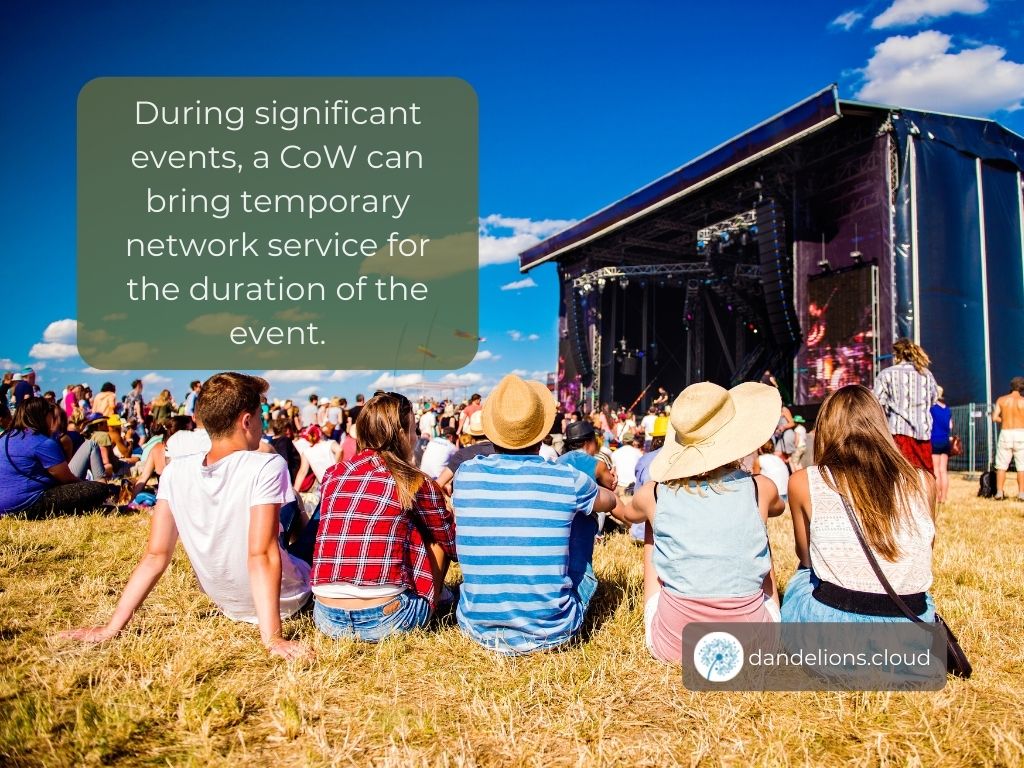
During significant events, a CoW can bring a temporary network service for the event duration.
For example, significant events such as the Super Bowl or music festivals will need the CoW, primarily if it is held in a remote location. Staffs and participants will need a way to communicate with one another.
Pre-Permanent Tower Assembly

The COW setup can give a temporary signal when a standard tower is being assembled. This can be done when a network provider wants to expand its coverage or when a broken tower is being repaired.
What Are The Differences Between A Cell On Wheels And A Gyrochute?
Cells On Wheels
The cell on wheels delivers temporary telecommunications coverage, crucial for an emergency, major events, or pre-permanent tower assembly.
The CoW relies on roadways for delivery, which means that deployment can only happen at least 24 hours after a disaster. It is large and limited in terms of supply due to its high cost.
Gyrochutes
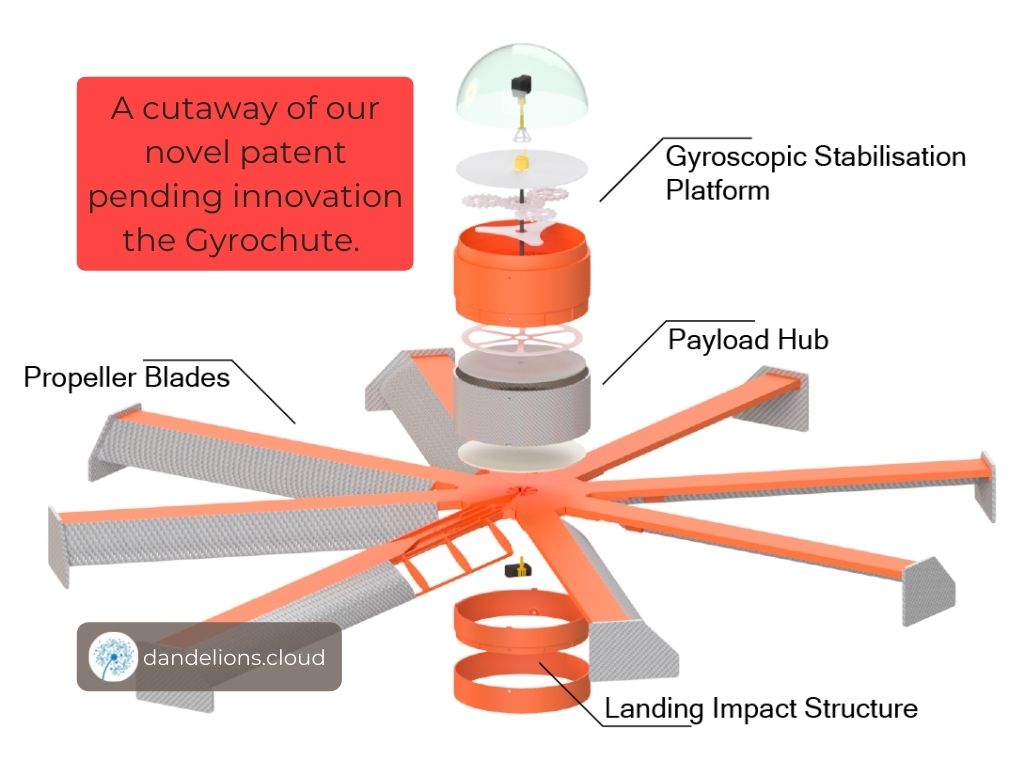
The Gyrochute, just like the CoW, can also deliver temporary telecommunications coverage.
The Gyrochute can be delivered rapidly due to the incredible aircraft speeds, which means that it can be deployed during a disaster. The Gyrochute does not rely on roadways for delivery as they are capable of being aerially delivered anywhere. The Gyrochute is comparatively small in size and can be mass-produced due to its cheaper production cost compared to the CoW.
Conclusion
The Gyrochute and cell on wheels both deliver temporary telecommunications coverage. The cell on wheels relies on roadways for delivery, is large in size, and limited numbers may be available. In contrast, the Gyrochute can be aerially delivered, small in size, and can be mass-produced.
